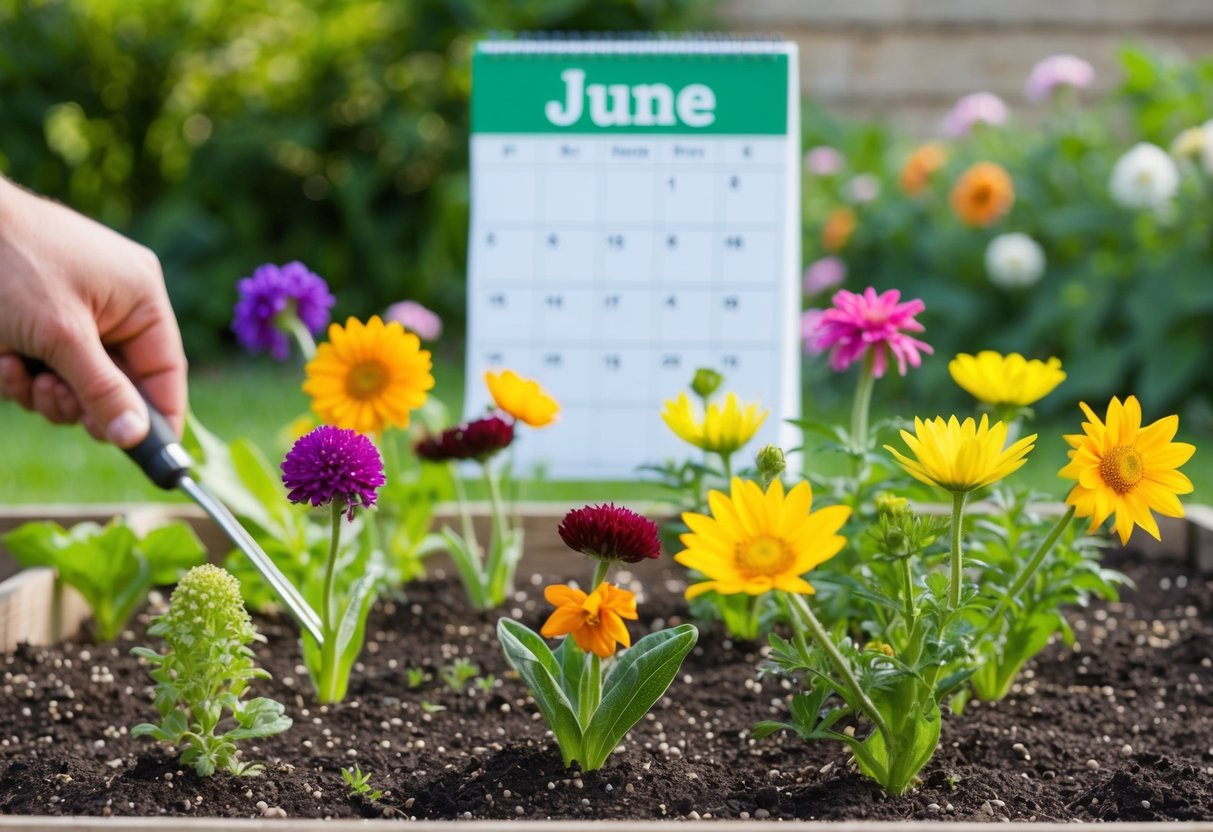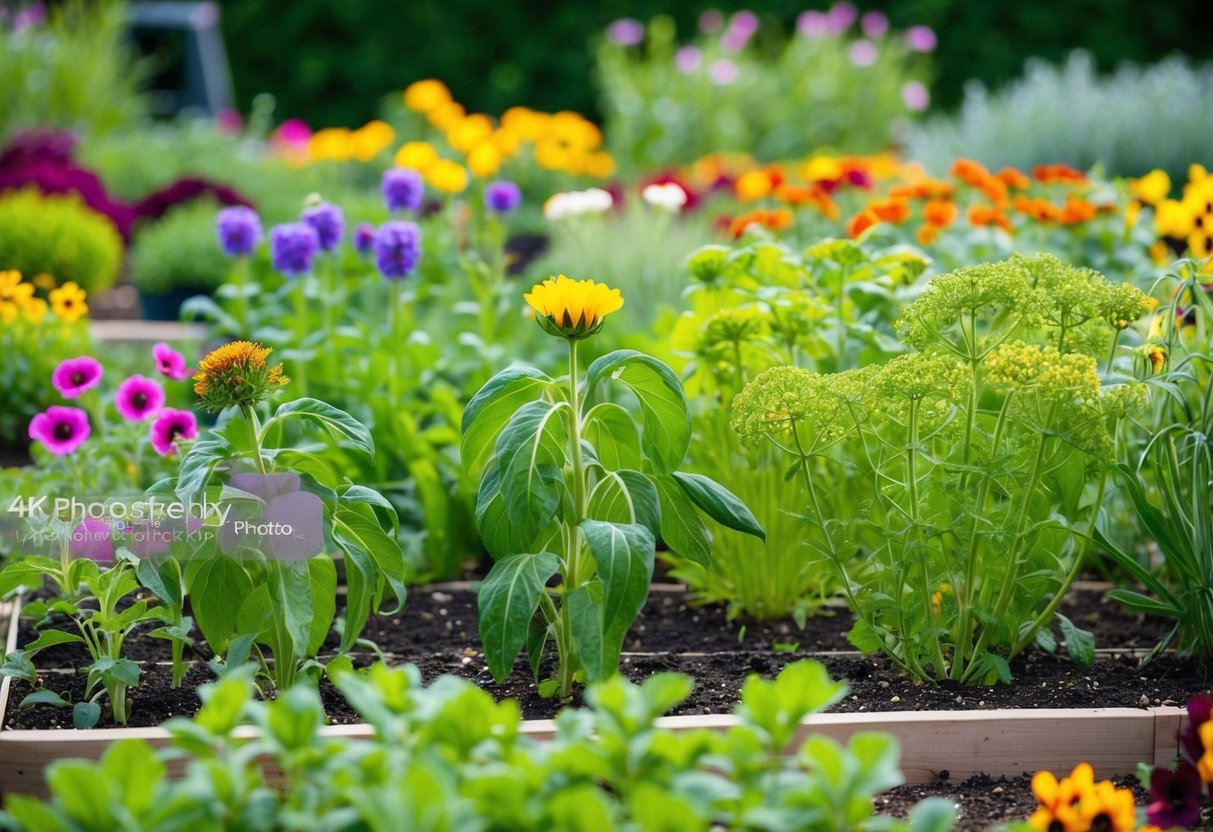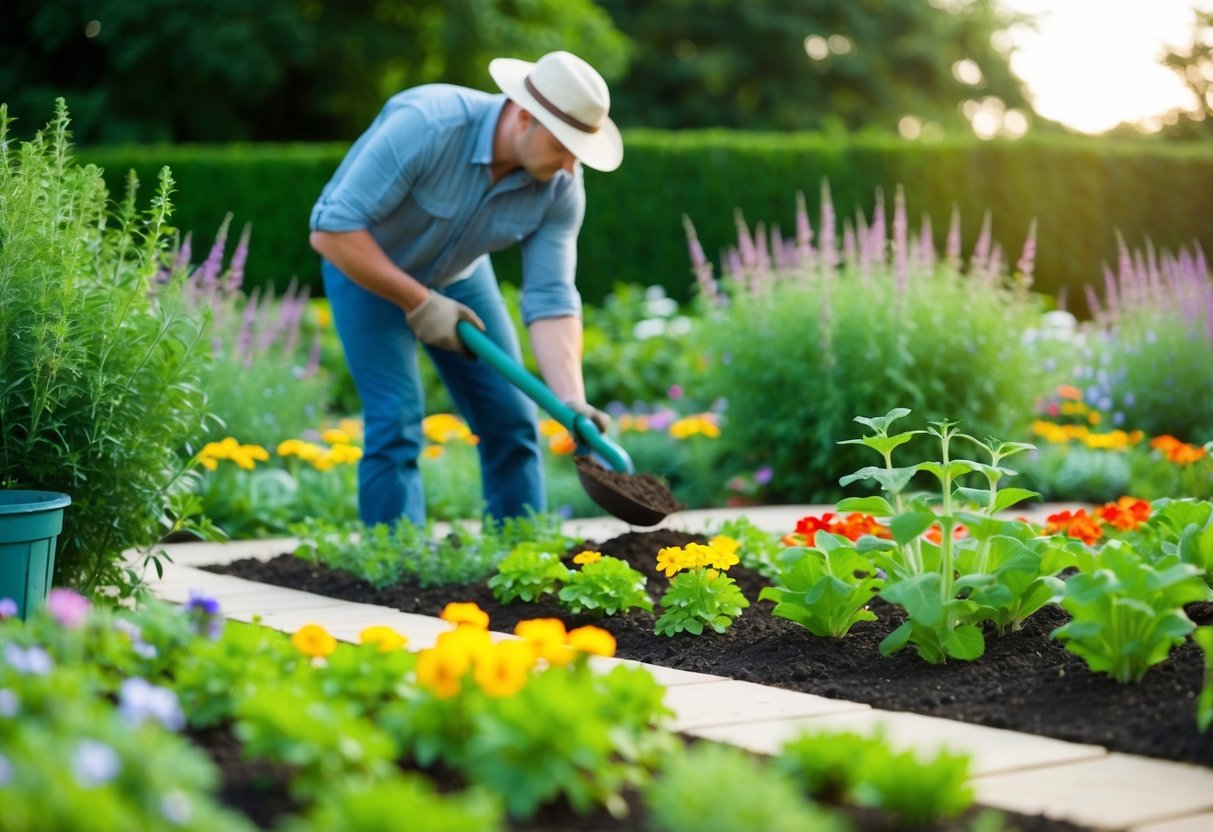Is it too late to sow annuals in June? Tips for Late Bloomers
Ever wonder if you’re too late to sow annuals in June? You’re in luck—it’s not too late at all! Lots of annuals can still be planted for a beautiful garden later in the summer. It’s a great time to add vibrant bloomers like marigolds and zinnias to your outdoor space. These flowers not only brighten up garden beds but also thrive with warm soil.

Getting your planting schedule right is key to enjoying a colorful bloom. Focus on flowers that are fast-blooming and can handle a shorter growing season.
Varieties such as calendula and sunflowers are excellent choices for June sowing. They grow quickly and ensure that your garden remains lively and visually appealing.
With a strategic approach to sowing, you can create a stunning garden that rewards you with beauty and joy throughout the season. Choose the right annuals that fit your local climate and make the most out of your gardening efforts. Engage in the rewarding experience of watching your garden flourish with life and color even if you’re starting in June.
Understanding the Sowing Calendar

When planning to sow annuals in June, timing and conditions are key. Your focus should be on identifying the last frost date and creating optimal growing conditions to ensure your plants thrive.
Last Frost Date and Its Importance
Knowing the last frost date in your area is crucial when sowing annual flowers. This date marks the end of potential freeze events that can damage your seedlings.
To find the last frost date, consult local gardening resources or online tools specific to your climate.
The last frost date influences when you can safely plant outside. Planting after this date decreases the risk of frost damage, allowing sensitive plants to grow without being harmed.
In milder zones, like Zone 8b, you may benefit from an extended growing season with milder winters. This can give you more flexibility when planning your garden.
Optimal Conditions for Summer Sowing
Summer planting can be successful with proper environmental conditions.
Choose a spot with full sun, as many annuals thrive under these conditions. Ensure soil is loose and well-drained, as this promotes healthy root growth.
After planting the seeds, water them thoroughly but avoid overwatering.
If you’re sowing directly in the ground or using containers, ensure the soil remains moist but not soggy. This helps the seeds germinate and establish strong roots.
In warmer regions, soil temperatures are higher, which may aid in faster seed sprouting. However, be mindful of heat stress on seedlings. Regular watering and mulch can help maintain optimal conditions for your plants.
Selecting the Right Annuals for June Planting

June is a great time for sowing annuals that thrive in warm weather. You’ll benefit from choosing plants that can handle the heat and bloom beautifully as summer progresses.
This section outlines which flowers are ideal for planting at this time of year, focusing on their adaptability to warm temperatures.
Flowers That Thrive in Mid-Summer
Some flowers are well-suited for the heat and long daylight hours of mid-summer. Sunflowers are a classic choice, growing tall with bold, bright blooms. They’re easy to care for and can make a stunning visual impact in your garden.
Marigolds are another excellent pick. With their bright orange and yellow flowers, they add a splash of color and deter pests. These resilient plants can handle hot and dry conditions.
Zinnias offer a wide range of colors and thrive in sunny spots. These flowers are great for cutting gardens and provide continuous blooms through summer. Cosmos are also a good choice for their delicate, daisy-like flowers that flourish in heat without too much fuss.
Heat-Loving Varieties
For those looking to make the most of June planting, consider direct sowing heat-loving varieties.
Calendula can be a wonderful option, offering cheerful blooms that last long.
Other valuable varieties include some marigold types that grow particularly well in hot environments, requiring little maintenance once established.
By planting these flowers directly into the soil, you give them a chance to adapt better to their growing conditions. Most of these type of flowers prefer full sun and well-drained soil, making them both tough and easy to grow during the hot months.
Gardening Techniques for Late Sowing

When sowing annuals late in the season, it’s important to choose the best method and care for the plants with the right conditions.
Direct sowing versus transplanting are strategies you’ll need to consider, along with maintaining proper moisture and sunlight.
Direct Sowing vs. Transplanting
Direct sowing involves planting seeds directly into their final growing spots. This method can be simpler and helps plants establish quickly.
Choose a bare, weed-free patch of soil for sowing. Ensure the soil has a fine, crumbly texture for the seeds to thrive.
Transplanting involves starting seeds indoors, possibly in an indoor greenhouse, before moving young plants outside. This provides a head start, especially if June temperatures are unpredictable.
Use a small watering can to maintain gentle and even water levels for seedlings. When transplanting, be gentle to minimize plant shock. Pick a calm day for moving plants to reduce stress.
Maintaining Moisture and Sunlight
Successful late sowing relies on keeping seeds and seedlings moist.
Use a watering can with a fine rose to avoid disturbing the soil. Regular watering ensures roots can establish well.
Opt for early morning or late afternoon watering to reduce evaporation. Always check soil moisture levels by touching the soil a couple of inches below the surface.
Providing enough sunlight is crucial. Most annuals require full sun.
Place plants in locations where they receive at least six to eight hours of sunlight daily. If growing indoors, ensure they’re near a south-facing window or under grow lights.
For outdoor planting, remove obstacles that may shade the seedlings. Adjust plant spacing to prevent shadowing and competition for light.
Companion Planting and Crop Rotation

Companion planting and crop rotation are great ways to boost your garden’s health. They help improve soil quality, reduce pests, and promote better plant growth. Let’s dive into how these methods work, especially with annuals like tomatoes and carrots.
Benefits of Companion Planting
Companion planting involves growing plants together that can benefit each other. For instance, planting tomatoes with basil can improve the flavor of tomatoes and deter pests.
Carrots do well with beans, as beans fix nitrogen in the soil, which carrots love.
Planting kale with marigolds can help repel harmful insects. The flowers attract beneficial bugs that prey on pests.
Using this method can help create a balanced ecosystem in your garden, making it healthier and more productive.
Annuals That Pair Well with Vegetables
When choosing annuals to plant with your vegetables, consider those that offer helpful interactions.
For example, nasturtiums pair well with plants like peas and beans. They can act as trap crops, drawing pests away from your main vegetables.
Petunias are good companions for beans and tomatoes, as they help deter beetles and other pests.
Planting sunflowers along the edges of a vegetable garden can offer shade and support for climbing plants like peas.
By carefully selecting annuals that complement your vegetables, you can enhance growth and enjoy a bountiful harvest.
Pest Management and Maintenance

Maintaining a healthy garden involves managing pests and diseases effectively. In the summer, you might face challenges like aphids and powdery mildew, but with the right strategies, you can keep your garden flourishing.
Natural Predators and Pollinators
Encouraging natural predators in your garden helps control harmful pests. Ladybugs and lacewings love feasting on aphids, one of the most common garden pests.
Lacewings are particularly effective against aphid infestations. Birds also contribute by eating caterpillars and other insects that harm your plants.
Including a variety of flowers can invite pollinators like bees and butterflies. These creatures do more than pollinate—they can help maintain a balanced ecosystem.
Companion planting with specific herbs and flowers promotes biodiversity, attracting both predators and pollinators.
Common Summer Pests and Diseases
Summer brings its own set of challenges such as aphids and powdery mildew. Aphids suck the juice from plants, leaving them stunted. They often appear on tender new growth. Look out for clusters of these tiny insects on the undersides of leaves.
Powdery mildew appears as a white or grayish powder on leaves and can spread quickly. You can minimize the risk by ensuring good air circulation and avoiding overhead watering. Also, regularly check for signs and remove affected leaves promptly.
It’s also a good idea to divide and cut back any overgrown plants to improve air circulation. This helps prevent diseases and keeps your garden looking neat. Regular monitoring will alert you to early signs of problems, allowing you to act swiftly.







